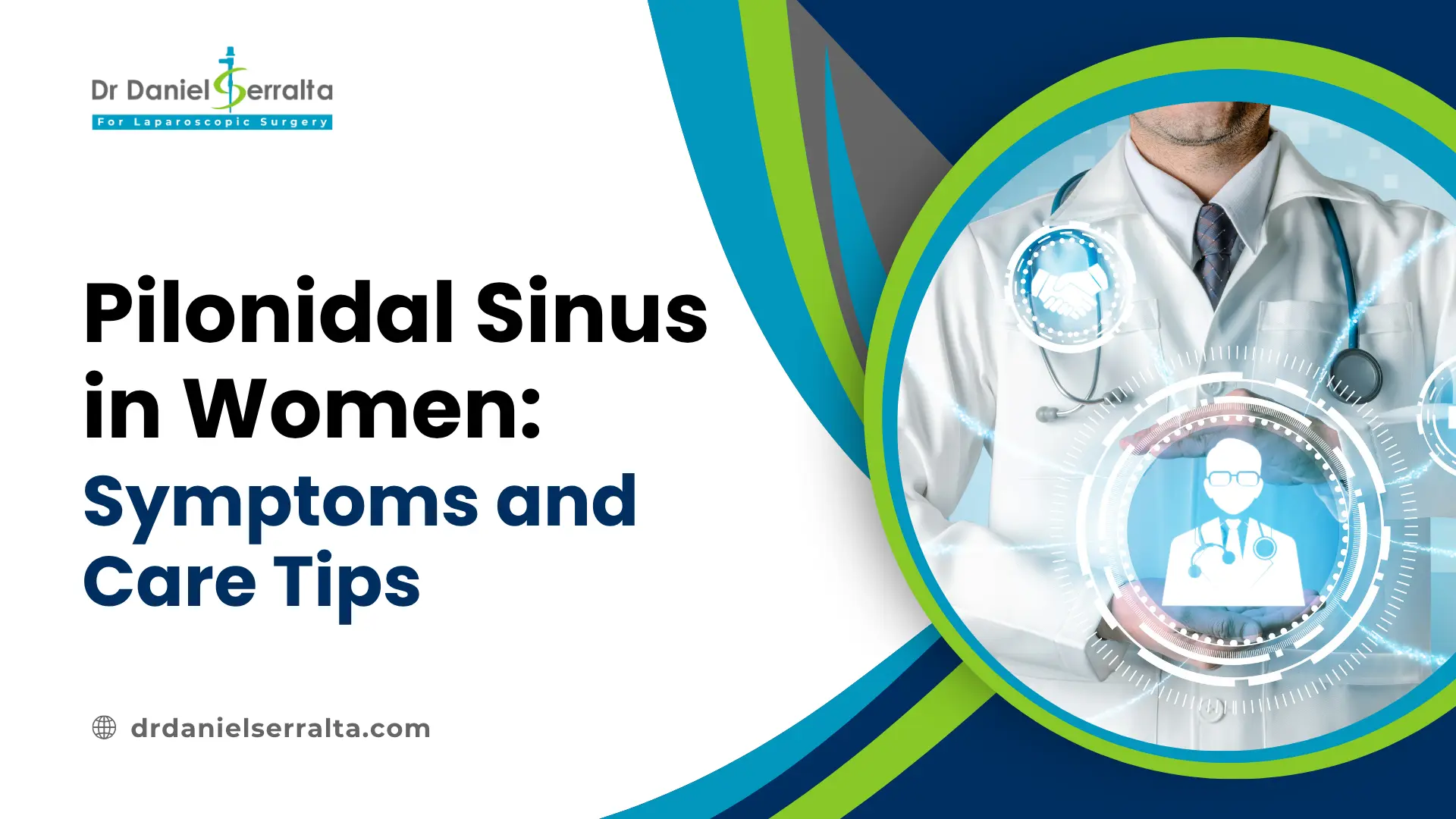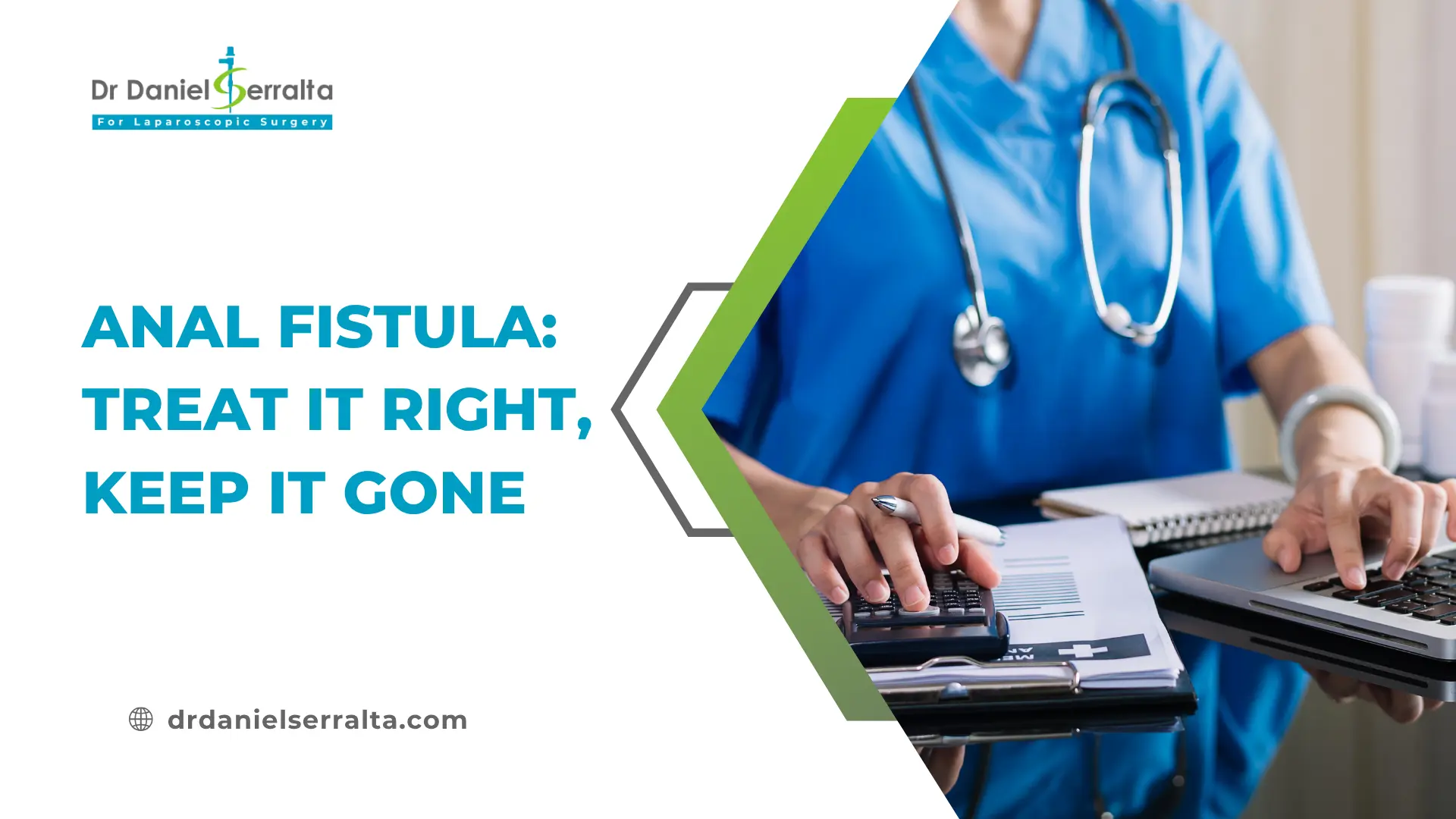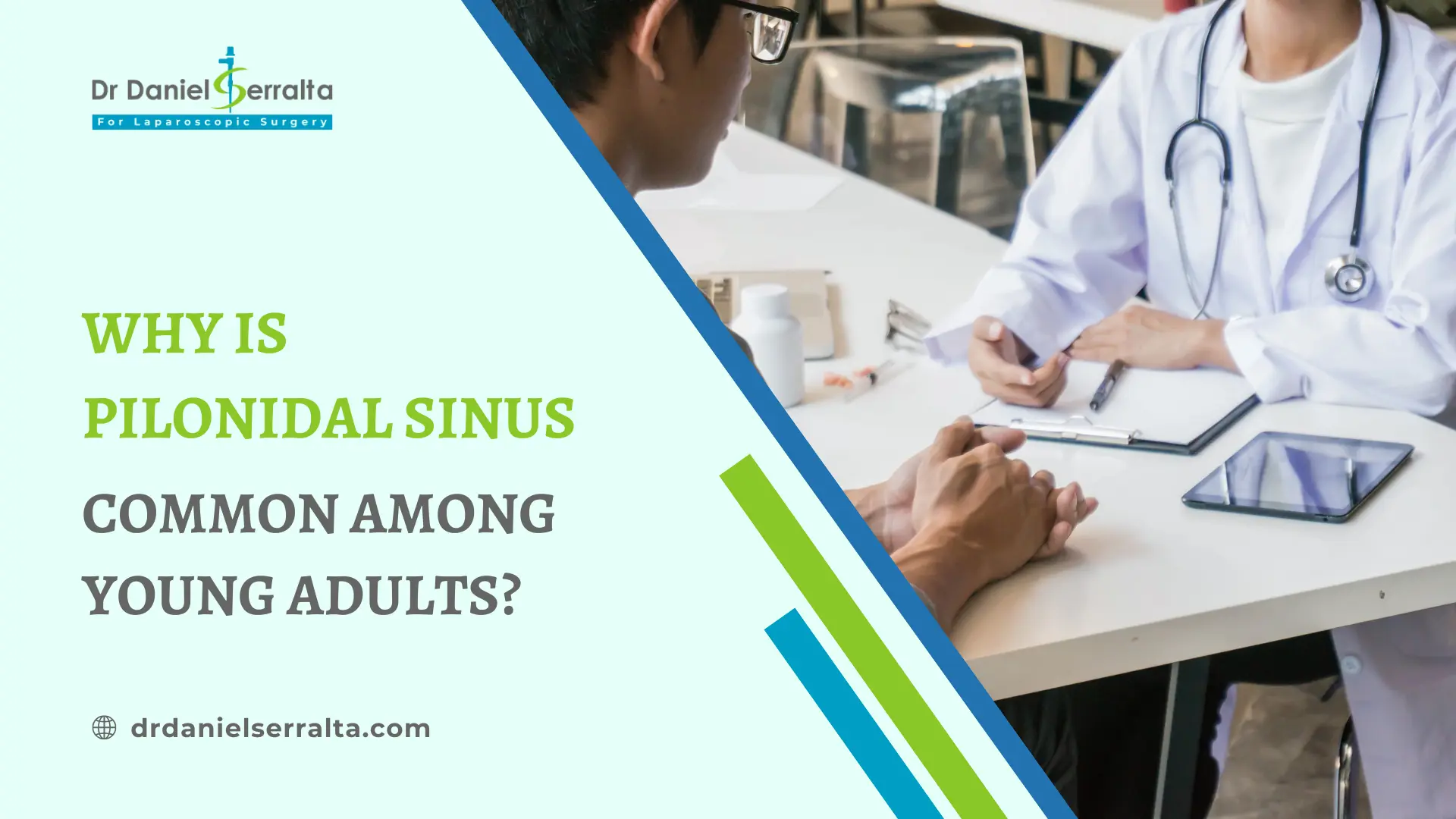Difference Between a Pilonidal Cyst and a Pilonidal Sinus?

Patients often confuse a pilonidal cyst with a pilonidal sinus, yet they are not the same. Understanding the difference is vital, especially for individuals in Dubai who experience tailbone discomfort, swelling, or drainage. While both conditions originate in the sacrococcygeal region, their progression and treatment differ. This guide aims to clarify the distinction, explain symptoms, and guide patients toward proper care.
Definitions: Pilonidal Cyst vs. Pilonidal Sinus
A pilonidal cyst is a fluid-filled sac that forms beneath the skin near the tailbone. It typically contains hair, skin debris, and inflammatory material. A pilonidal sinus, however, refers to one or more tracts that extend from the skin’s surface deep into the tissue.
While the cyst is a contained structure, the sinus involves continuous or recurrent infection. The sinus may evolve after a cyst ruptures or after repeated abscess formations. Doctors often diagnose both conditions together due to their overlap, but treatment may vary depending on severity and infection status.
How They Develop
Both the pilonidal cyst and pilonidal sinus result from the body reacting to ingrown hairs or debris under the skin. Excessive sitting, friction, and sweat accumulation in the gluteal cleft increase the risk.
Initially, hair and debris get trapped under the skin, forming a cyst. If the cyst becomes infected and bursts or is left untreated, it may develop into a sinus. This sinus forms a tract or tunnel that may drain pus or blood. Chronic cases result in multiple interconnected sinuses.
Risk factors include obesity, poor hygiene, sedentary lifestyle, coarse body hair, and family history.
Symptoms Comparison
Pilonidal Cyst Symptoms:
- Swelling or tenderness near the tailbone
- Pain while sitting or moving
- Redness and warmth in the area
- Pus or fluid discharge when infected
Pilonidal Sinus Symptoms:
- Persistent or intermittent pus discharge
- Foul-smelling fluid from sinus openings
- Chronic inflammation
Formation of multiple sinus tracts
While a pilonidal cyst may be asymptomatic for months, a pilonidal sinus often leads to recurring drainage and infections. The sinus is typically more complex and harder to treat.
Diagnosis Methods
Doctors usually begin the diagnosis with a physical examination. They look for midline pits, swelling, tenderness, and signs of discharge. In some cases, imaging like ultrasound or MRI may help map the sinus tract or rule out other conditions.
In Dubai, many patients visit a pilonidal cyst specialist in Dubai for accurate assessment. Clinics often use high-resolution ultrasound to detect deep-seated sinuses. Early diagnosis prevents the spread of infection and helps select the most effective treatment plan.
Treatment Options
For Pilonidal Cyst:
Conservative Management: Warm compresses and hygiene maintenance
Incision and Drainage: For infected cysts, a quick outpatient procedure
Surgical Excision: For recurrent cysts or abscesses
For Pilonidal Sinus:
Excision with Healing by Secondary Intention: Wound left open to heal naturally
Primary Closure: Surgical excision followed by direct suturing
Flap Procedures: Advanced surgeries for recurrent or extensive disease
Minimally Invasive Methods: Laser treatment, phenol injection, and endoscopic sinus treatment (EPSiT)
Patients undergoing pilonidal sinus surgery in Dubai often benefit from minimally invasive procedures, offering quicker recovery and less pain. For complex cases, the best pilonidal cyst surgery in Dubai involves flap techniques performed by experienced surgeons.
Prevention & Self-Care Tips
Preventive strategies play a crucial role in avoiding recurrence:
- Shave or laser hair removal around the tailbone
- Use antibacterial soap and keep the area clean
- Avoid prolonged sitting, or wear breathable clothing
- Maintain a healthy weight
- Keep the area dry and sweat-free using powder or moisture-wicking fabrics
These steps reduce friction and the chance of hair trapping, which commonly triggers both pilonidal cyst and pilonidal sinus.
When to See a Specialist
Patients should consult a doctor when:
- Pain worsens or becomes persistent
- There is pus or blood drainage
- Fever or swelling develops
- Previous treatments have failed
In such cases, a consultation with a pilonidal cyst specialist in Dubai ensures timely intervention. Surgeons can assess the extent of the sinus and propose suitable options, including surgery or less invasive alternatives. Understanding the timeline, costs, and expected outcomes helps patients make informed decisions.
Conclusion
Although both a pilonidal cyst and a pilonidal sinus affect the same region, they differ in structure, progression, and treatment. A cyst is often the starting point, while a sinus indicates chronic infection. Early diagnosis, hygiene, and lifestyle changes can reduce the risk of complications.
Modern surgical methods available through pilonidal sinus treatment in Dubai allow for fast recovery and minimal disruption. Whether you’re dealing with an early-stage cyst or a complicated sinus, expert care makes a significant difference. Consult Dr. Daniel Serralta for the best pilonidal cyst surgery in Dubai.
FAQs
1. Is a pilonidal cyst the same as a pilonidal sinus?
No. A pilonidal cyst is a closed sac, while a sinus includes an open tract or tunnel.
2. Can a cyst turn into a sinus?
Yes. An untreated or infected cyst can rupture and develop into a sinus.
3. Do I need surgery for both conditions?
Not always. Some cysts resolve with care, while sinuses often require surgical removal.
4. What is the recovery time after pilonidal sinus surgery in Dubai?
It varies, but minimally invasive methods may allow return to normal activity in 1–2 weeks.
5. Who offers the best pilonidal cyst surgery in Dubai?
Specialists with experience in colorectal surgery and access to modern techniques provide the best results.







